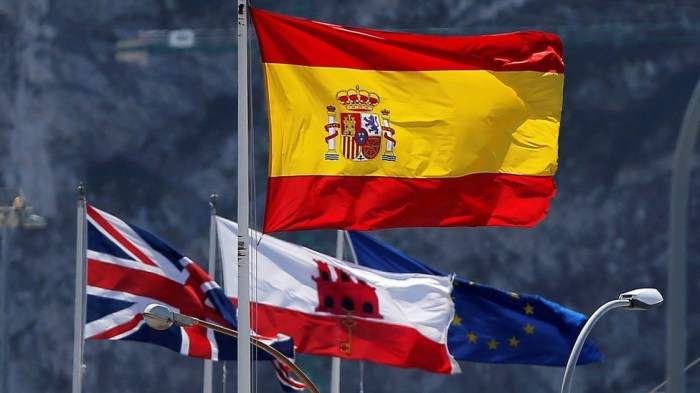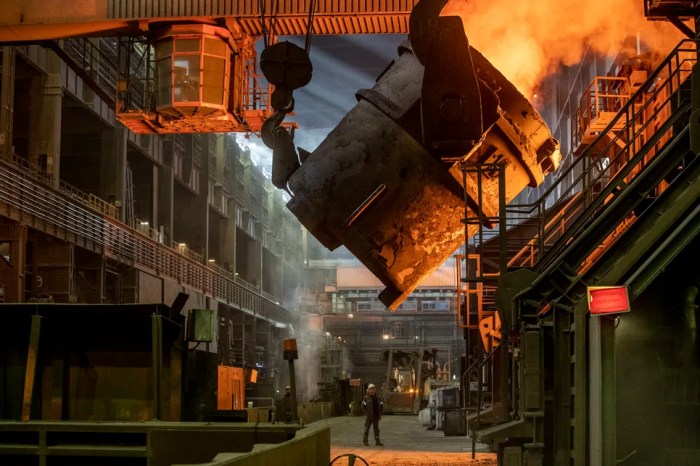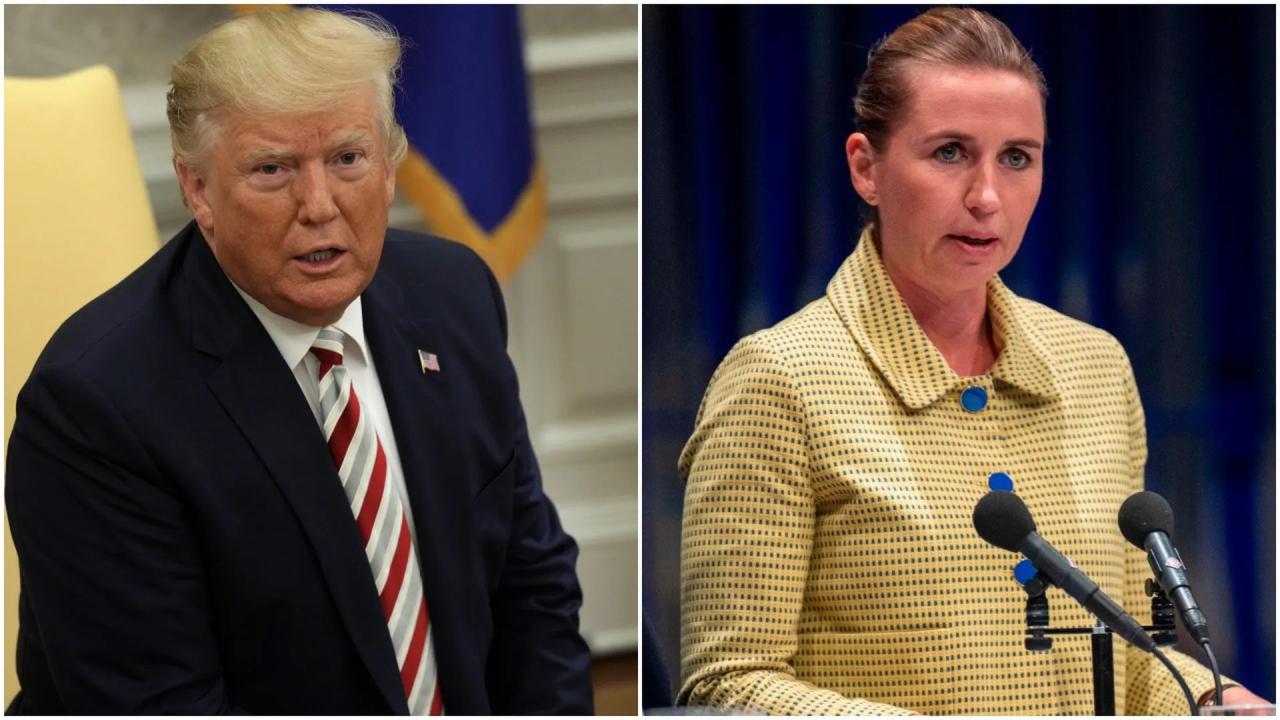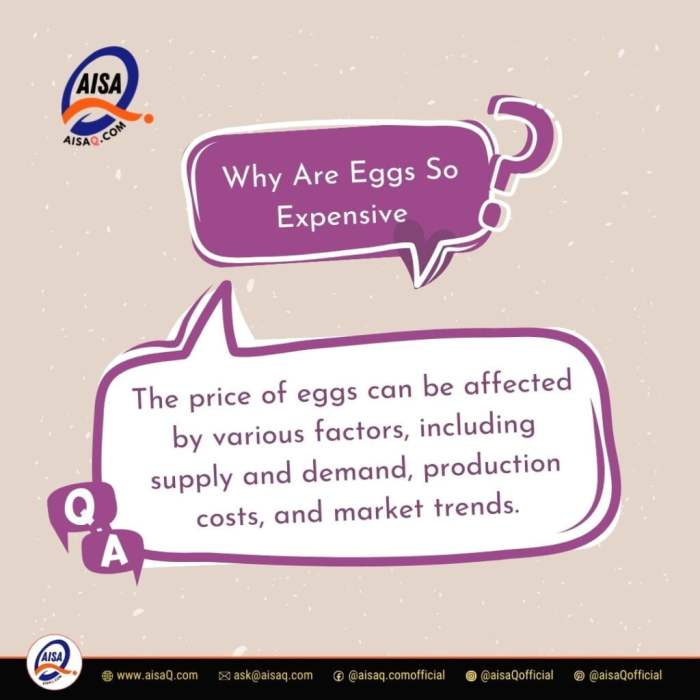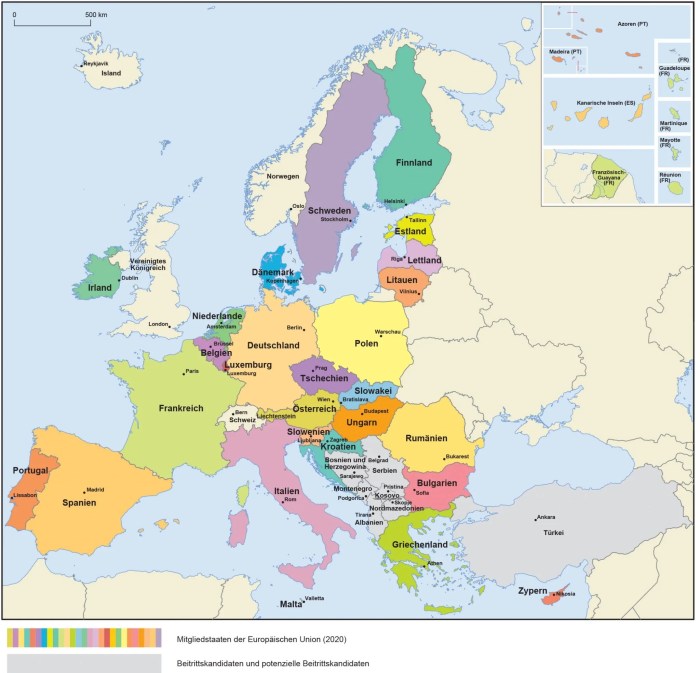
EU picks 13 new critical material projects including Greenland, marking a significant step in securing Europe’s future supply chains. This initiative highlights the EU’s commitment to reducing reliance on foreign sources for essential materials. The selection process, encompassing various criteria, reflects the EU’s strategic approach to bolstering its technological capabilities and economic resilience. Greenland’s inclusion underscores its crucial role in this endeavor, promising both opportunities and challenges.
The projects are diverse, aiming to develop new technologies and processes to extract, process, and utilize these vital materials sustainably. Early projections suggest substantial impact on the European economy and technological advancement.
The EU’s initiative involves a diverse portfolio of projects focused on critical materials. These projects are geographically dispersed, showcasing the EU’s global reach and commitment to securing resources. The selection process involved evaluating factors such as project feasibility, environmental sustainability, and potential economic benefits. Each project’s specific goals and strategies are detailed in the comprehensive report, providing a clear picture of the EU’s ambitions.
A table summarizes the 13 projects, including their location, key goals, and anticipated impact. This analysis provides a crucial insight into the EU’s forward-looking strategy for critical materials.
Greenland’s Role in EU’s Critical Materials Strategy
Greenland, with its vast mineral resources, holds a significant position in the EU’s burgeoning critical materials strategy. The EU’s dependence on secure and sustainable supply chains for essential minerals used in technology and industry necessitates exploring alternative sources, and Greenland presents a compelling opportunity. This exploration necessitates careful consideration of Greenland’s unique context, potential benefits, and the challenges of establishing a collaborative framework.The EU’s critical materials strategy recognizes the crucial role of diverse sourcing to reduce reliance on single suppliers.
Greenland’s untapped reserves of critical minerals like rare earth elements, lithium, and other metals position it as a potentially valuable partner in this endeavor. However, successful collaboration hinges on addressing environmental concerns, ensuring equitable benefits for Greenlandic communities, and navigating the complexities of international cooperation.
Greenland’s Strategic Importance in Critical Material Supply
Greenland’s vast territory holds substantial deposits of critical minerals, including rare earth elements, lithium, and various metals. These minerals are essential components in modern technologies, including electronics, renewable energy systems, and defense applications. The EU’s current reliance on specific regions for these materials makes securing alternative sources crucial for long-term supply chain resilience. This is particularly relevant as global demand for these materials continues to grow.
Access to Greenland’s reserves could significantly diversify the EU’s supply sources.
The EU’s selection of 13 new critical material projects, including one in Greenland, is a big deal. It’s fascinating to see the focus on sustainable resources, but honestly, I’m also buzzing about the tennis world right now! Check out this WTA roundup about Rebecca Sramkova stunning Barbora Krejcikova in London here. Hopefully, this focus on innovation in sports and sustainable materials can work together to create a better future for all.
Back to the EU projects, though – they’re definitely a promising step forward.
Potential Benefits for Greenland from Participation in Projects
Participation in EU-led projects offers Greenland several substantial advantages. These include direct economic benefits from mineral extraction and processing, creating new jobs and fostering economic growth within Greenland. This economic development can be leveraged to address the unique needs of Greenlandic communities, including infrastructure improvements and social programs. Furthermore, technological advancements associated with extraction and processing can boost Greenland’s industrial capacity, potentially leading to higher-value exports.
Technological transfer from EU partners is another valuable aspect, potentially improving Greenland’s long-term competitiveness in the global market.
The EU’s pick of 13 new critical material projects, including one in Greenland, is a smart move. However, this initiative could be significantly impacted by the potential for increased energy costs due to the Trump tax bill’s squeeze on clean power, as highlighted in this article about trump tax bill squeeze clean power could raise energy bills.
Ultimately, these new EU projects will need to factor in the potential for higher energy prices, making their long-term success a bit uncertain. Greenland’s involvement in these critical material projects is still a positive step forward, nonetheless.
Potential Challenges and Considerations for Collaboration with Greenland
Collaboration with Greenland requires careful consideration of the unique political and social landscape of the territory. Any project must adhere to Greenland’s sovereignty and respect its self-determination. Meaningful consultations with Greenlandic communities are essential to ensure that benefits are distributed equitably and that the project aligns with their needs and aspirations. The development of robust legal and regulatory frameworks to govern resource extraction is crucial to ensure environmental protection and responsible mining practices.
Environmental Implications of Extracting Critical Materials in Greenland
Extracting critical materials in Greenland carries potential environmental risks. Careful environmental impact assessments are paramount to mitigate the potential damage to fragile ecosystems. Sustainable mining practices, including waste management and responsible tailings disposal, are crucial. The preservation of Greenland’s unique biodiversity, including its glaciers and wildlife, is paramount. Minimizing the ecological footprint of mining operations is vital for long-term sustainability.
Comparison of Critical Materials Availability in Greenland to Other Regions, Eu picks 13 new critical material projects including greenland
| Region | Rare Earth Elements | Lithium | Other Critical Metals |
|---|---|---|---|
| Greenland | High potential, unconfirmed reserves | High potential, unconfirmed reserves | High potential, unconfirmed reserves |
| Australia | Significant reserves, established mining | Significant reserves, established mining | Significant reserves, established mining |
| China | Dominant producer | Significant producer | Significant producer |
| Democratic Republic of Congo | Significant reserves, challenges in governance | Significant reserves, challenges in governance | Significant reserves, challenges in governance |
This table provides a preliminary overview. Further research and exploration are needed to precisely quantify reserves and establish a more comprehensive comparison. The data presented is based on publicly available information and current estimates. Accurate assessments require comprehensive geological surveys and further exploration.
Project Specifics and Impact: Eu Picks 13 New Critical Material Projects Including Greenland
The EU’s 13 new critical materials projects represent a significant step towards achieving greater self-sufficiency in essential raw materials. These projects span diverse technologies and approaches, reflecting the multifaceted nature of the challenge. Each project aims to foster innovation, reduce reliance on foreign suppliers, and enhance Europe’s technological leadership in critical material production. The potential impact on the EU’s industrial landscape and global competitiveness is substantial.
Key Technologies Employed
The 13 projects leverage a range of advanced technologies to address the diverse needs of critical materials production. These include: advanced metallurgy, innovative chemical processing techniques, advanced materials characterization methods, and sophisticated recycling and recovery processes. For example, several projects utilize 3D printing for creating novel material designs, while others explore the use of artificial intelligence for optimizing material extraction and processing.
This multifaceted approach is crucial to addressing the complexity of critical material supply chains.
Project Approaches to Critical Material Needs
The projects employ varied approaches to address the diverse needs of critical materials. Some projects focus on developing new extraction methods for specific materials, while others concentrate on refining existing extraction processes to improve efficiency and reduce environmental impact. For example, one project might concentrate on improving the efficiency of rare earth element extraction from low-grade ores, whereas another might focus on developing novel chemical methods to recover critical materials from industrial waste streams.
This diversity of approaches ensures that the EU is addressing the challenge from multiple angles.
Long-Term Impact on EU Technological Advancement
These projects have the potential to significantly advance EU technological capabilities in critical materials. By fostering innovation and collaboration across various sectors, the projects will likely drive the development of new technologies and processes, leading to improved material properties and performance. This, in turn, could result in a more robust and resilient European industrial base. Examples of past successful technological advancements in other sectors demonstrate the potential of targeted investments to yield substantial long-term returns.
The EU’s picking of 13 new critical material projects, including a Greenland focus, is definitely exciting. This move highlights the growing need for these resources, and considering that companies like BESI lifts its forecast expects higher demand for its advanced solutions , it seems the market is primed for substantial growth. This bodes well for the future of these crucial materials and the projects around them.
Contribution to Reducing Reliance on Foreign Sources
Each project is designed to contribute to reducing the EU’s reliance on foreign sources for critical materials. For instance, a project focused on developing a new method for producing a specific material would enable the EU to establish its own supply chain and minimize dependence on external suppliers. This will strengthen Europe’s economic resilience and strategic autonomy.
Anticipated Outcomes for the EU
- Enhanced Material Security: Projects are expected to improve the EU’s resilience to disruptions in global supply chains for critical materials, ensuring a more stable and reliable source of these materials. This is crucial for maintaining essential industries and infrastructure.
- Economic Growth: The development of new technologies and processes will create new job opportunities and stimulate economic growth in the EU. Successful development of these new processes could drive substantial increases in productivity.
- Technological Leadership: These projects are expected to solidify the EU’s position as a global leader in critical materials research and development. This leadership will enhance the EU’s influence in international collaborations.
- Environmental Sustainability: Many projects are designed to integrate environmentally friendly practices, reducing the environmental impact of critical material extraction and processing. These projects will likely lead to more environmentally sustainable production methods.
- Industrial Diversification: The projects could stimulate the development of new industries and applications for critical materials, leading to a more diversified and resilient industrial landscape.
Global Context and Competition

The EU’s push to secure its critical materials supply chain is not an isolated effort. A global race for these resources is underway, with significant implications for geopolitical stability and economic growth. Understanding the strategies of other major economies is crucial to navigating this complex landscape and maximizing the EU’s chances of success.The global landscape of critical materials sourcing and development is highly competitive and complex.
Countries are increasingly focused on domestic production and strategic partnerships to ensure their access to essential minerals, rare earths, and other critical materials needed for various industries, from electronics to renewable energy.
Global Critical Materials Landscape
The global distribution of critical materials is uneven. Certain regions possess significant reserves, while others are heavily reliant on imports. This imbalance fuels competition and necessitates diverse sourcing strategies. Technological advancements and innovation play a crucial role in both extraction and processing, enabling countries to enhance their capabilities in value-addition. Countries with strong research and development programs, coupled with supportive government policies, are better positioned to compete in the global race.
This dynamic environment necessitates a comprehensive understanding of the geopolitical implications of critical materials acquisition.
Strategies of Other Major Economies
Several major economies have adopted distinct strategies to secure their critical materials supply. China, for example, has historically focused on vertical integration, controlling the entire supply chain from mining to processing. The US has prioritized domestic production, particularly through incentives and tax credits, aiming to reduce reliance on foreign sources. Other countries, like Canada and Australia, leverage their natural resource wealth to position themselves as major exporters.
These varied strategies reflect differing priorities and economic structures.
Geopolitical Implications
The EU’s focus on critical materials will have significant geopolitical implications. It could lead to increased tensions with countries that control significant reserves, potentially impacting trade relations and diplomatic efforts. International cooperation and fair market practices will be crucial to mitigate these risks and ensure a stable global supply chain. Competition for these materials could lead to a reshaping of global alliances and trade agreements.
This is not a new phenomenon, historical examples demonstrate that resource scarcity has often been a driver of conflict.
Opportunities and Challenges in International Collaboration
International collaboration is crucial for developing sustainable and equitable access to critical materials. It can involve joint ventures, knowledge sharing, and coordinated research efforts to enhance efficiency and transparency. However, potential challenges include differing priorities, security concerns, and trust issues between countries. Building trust and establishing transparent standards are essential for fostering fruitful international collaborations. Joint ventures and technology transfer agreements can facilitate the creation of innovative solutions and secure access to new sources.
Comparative Analysis of Critical Material Strategies
| Country | Strategy Focus | Key Initiatives | Strengths | Weaknesses |
|---|---|---|---|---|
| EU | Diversification of sources, circular economy, domestic production | EU Critical Raw Materials Act, investment in recycling technologies | Focus on sustainability and long-term solutions | Relatively slower implementation compared to others |
| China | Vertical integration, domestic production, strategic partnerships | Investment in mining, processing, and downstream industries | Strong domestic manufacturing base | Potential environmental concerns, dependency on other countries |
| US | Domestic production, incentivizing domestic mining | Tax credits, grants, and streamlining permitting processes | Strong industrial base and technological capabilities | Limited domestic reserves for some materials |
| Canada | Leveraging natural resource wealth, export-oriented approach | Investments in mining and refining infrastructure | Abundant reserves of many critical materials | Dependence on global market demand |
This table provides a basic overview, but further research would reveal nuanced details within each strategy. The context and complexities of the global landscape are ever-changing, demanding ongoing analysis and adaptation.
Environmental and Social Considerations
The EU’s push for critical materials necessitates a careful evaluation of the environmental and social implications. While these materials are crucial for technological advancement and economic growth, their extraction and processing can inflict significant damage on ecosystems and local communities. A thorough assessment of potential risks and a commitment to sustainable practices are vital for responsible resource acquisition.
The EU’s strategy must prioritize both environmental protection and social equity to ensure long-term viability.
Environmental Impact of Extraction and Processing
The extraction and processing of critical materials often involve substantial environmental impacts. These range from habitat destruction and deforestation to water pollution and greenhouse gas emissions. For instance, the mining of rare earth elements can lead to severe soil erosion and contamination of water sources. The smelting and refining processes frequently generate air pollution, contributing to respiratory illnesses and impacting surrounding ecosystems.
Proper waste management is also a significant concern. Improper disposal of mining waste can contaminate groundwater and soil, jeopardizing the health of both humans and wildlife.
Potential Social Impacts on Local Communities
The influx of mining and processing activities can have profound social impacts on local communities. Displacement of residents, disruption of traditional livelihoods, and potential conflicts over land ownership and resource access are some of the key concerns. These impacts are especially pronounced in areas with limited economic opportunities and established cultural practices. The introduction of industrial activities often leads to changes in social structures and cultural norms.
For example, the arrival of a large-scale lithium mining operation can dramatically alter the demographics and social fabric of a rural community.
Measures to Mitigate Environmental Risks and Social Issues
Effective mitigation strategies are essential to minimize environmental and social risks. These measures should focus on stringent environmental regulations, community engagement, and the adoption of sustainable practices. Prioritizing the development of environmentally sound extraction techniques, such as the use of less water-intensive methods, and the implementation of stringent emission controls can significantly reduce environmental harm. Social impacts can be mitigated by ensuring fair compensation for affected communities, supporting alternative livelihood options, and promoting transparent and inclusive community engagement.
Potential Sustainable Practices Integrated into the Projects
Integrating sustainable practices is crucial for minimizing environmental and social impacts. This involves adopting closed-loop systems for material processing, reducing water consumption, and employing renewable energy sources. Implementing environmental impact assessments (EIAs) at every stage of the project lifecycle is essential to ensure compliance with environmental regulations. Transparency and accountability are key to building trust with local communities.
For example, engaging with local stakeholders in decision-making processes and ensuring fair compensation can prevent social conflicts.
Table Outlining Potential Environmental and Social Impacts for Each Project
| Project | Potential Environmental Impacts | Potential Social Impacts |
|---|---|---|
| Greenland Project | Increased risk of habitat destruction, potential water pollution from tailings, and increased greenhouse gas emissions from transportation. | Displacement of indigenous communities, potential conflicts over land use and resource access, and limited economic opportunities for locals. |
| Project 2 | Soil erosion, potential water contamination from chemicals used in processing, and air pollution from smelters. | Disruption of traditional farming practices, potential health concerns from exposure to pollutants, and lack of skilled labor in the region. |
| Project 3 | Deforestation, habitat fragmentation, and potential water scarcity in the region. | Displacement of farmers and herders, disruption of local markets, and loss of cultural heritage sites. |
| … | … | … |
Future Outlook and Potential
The EU’s critical materials strategy, encompassing projects like those focusing on Greenland’s resources, faces a dynamic future. Predicting precise timelines and outcomes is challenging, but understanding potential trends in demand, supply, and technological innovation is crucial for effective policymaking. This section delves into the anticipated trajectory of critical material needs, the evolving EU strategy, potential obstacles, and emerging opportunities.The future of critical materials hinges on global trends, technological advancements, and geopolitical factors.
This necessitates a proactive and adaptable approach from the EU to ensure its continued competitiveness and resilience in securing these essential resources.
Potential Future Trends in Critical Material Demand and Supply
Global demand for critical materials is expected to surge, particularly in sectors like renewable energy and electric vehicles. The rising adoption of electric vehicles, for instance, will significantly increase the demand for lithium, cobalt, and nickel. Simultaneously, the supply chain is likely to experience disruptions due to geopolitical instability and resource scarcity. The COVID-19 pandemic highlighted the vulnerability of global supply chains, emphasizing the need for diversification and resilience.
This necessitates the exploration of alternative sources, as well as improved domestic production capabilities.
Forecast for the Evolution of the EU’s Critical Materials Strategy
The EU’s strategy is expected to evolve from a reactive to a proactive approach. This will likely involve further strengthening partnerships with countries rich in critical resources, fostering technological innovation for extraction and processing, and incentivizing domestic production. A focus on circular economy principles will be essential to minimize waste and maximize the utilization of existing materials. This will involve investment in recycling and reuse technologies.
Potential Challenges to the EU’s Efforts in the Coming Years
Geopolitical tensions and trade disputes could disrupt supply chains, making it difficult for the EU to secure critical materials. Environmental and social concerns related to mining and processing practices may also create obstacles. Competition from other regions seeking to secure their own critical material needs will also pose a challenge. The EU must address these issues with robust regulations and incentives.
Furthermore, the transition to a sustainable economy will require considerable investment in new technologies and infrastructure, which may pose a financial burden.
Potential New Opportunities for Innovation in the Field
Technological advancements offer substantial opportunities for innovation. New extraction techniques, such as deep-sea mining, may offer access to previously inaccessible resources. Improved recycling and processing technologies can significantly reduce waste and increase material recovery rates. The development of substitute materials could also lessen reliance on specific critical elements. For example, research into alternative battery chemistries could reduce dependence on certain rare earth metals.
Timeline for the Development of Projects
A detailed timeline for individual project development is contingent on factors like funding, regulatory approvals, and the availability of necessary resources. Generally, project timelines are likely to range from 5 to 10 years, with some projects potentially taking even longer due to complex technical and environmental considerations. However, the projects related to the EU’s critical materials strategy will have different timelines, as they focus on various aspects of the value chain, including resource extraction, processing, and utilization.
The exact timeline will be influenced by the progress of specific research and development efforts, and the pace of technological advancements.
Final Review
In conclusion, the EU’s ambitious project selection underscores a concerted effort to secure its critical material supply. The inclusion of Greenland highlights the strategic importance of diverse partnerships. The projects’ potential to enhance EU technological advancement and reduce reliance on foreign sources is substantial. However, careful consideration of environmental and social impacts is crucial for long-term success.
The future success of these initiatives hinges on effective collaboration, sustainable practices, and proactive mitigation of potential challenges. A detailed examination of the projects’ potential impact on the global landscape of critical materials is also warranted.

